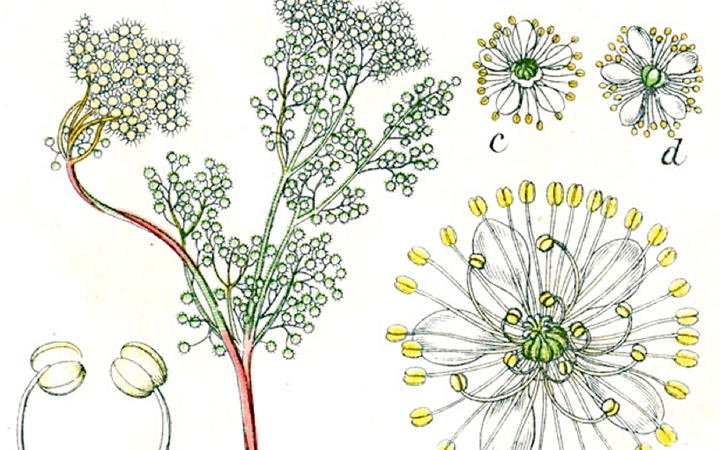Filipendula ulmaria, commonly known as meadowsweet[1] or mead wort,[2] is a perennial herb in the family Rosaceae that grows in damp meadows. It is native throughout most of Europe and Western Asia(Near east and Middle east). It has been introduced and naturalised in North America.
Juncus subnodulosus–Cirsium palustre fen-meadow and Purple moor grass and rush pastures BAP habitatplant associations of Western Europe consistently include this plant.[3]
Meadowsweet has also been referred to as Queen of the Meadow,[1] Pride of the Meadow, Meadow-Wort, Meadow Queen, Lady of the Meadow, Dollof, Meadsweet, and Bridewort.
The stems are 1–2 m (3–7 ft) tall, erect and furrowed, reddish to sometimes purple. The leaves are dark-green on the upper side and whitish and downy underneath, much divided, interruptedly pinnate, having a few large serrate leaflets and small intermediate ones. Terminal leaflets are large, 4–8 cm long, and three- to five-lobed.
Meadowsweet has delicate, graceful, creamy-white flowers clustered close together in handsome irregularly-branched cymes, having a very strong, sweet smell. They flower from early summer to early autumn.
Meadowsweet leaves are commonly galled by the bright orange-rust fungus Triphragmium ulmariae, which creates swellings and distortions on the stalk and/or midrib.
(From Wikipedia, March 2015)




